On June 13, Christie’s will be organizing an auction that will include the opportunity to purchase several Coptic manuscripts. The details of this auction can be found on their website (HERE, HERE, or HERE). From the information supplied by Christie’s, I was able to infer that the manuscripts on sale belonged to Lawrence Feinberg, an American collector who died in 2009. THIS WEBSITE gives the following information concerning Feinberg:
“Lawrence Feinberg was originally on the path to becoming a chemical engineer, but changed direction and followed his passion for papyrology. Mastering Greek, Latin, Egyptian, and various Semitic languages, he received his Master’s Degree from Columbia University in 1967.
He was hired by Columbia in 1968 to sort and preserve more than 1,000 papyri and vellum fragments that the university had acquired from Egyptian dealers. During this project, he discovered one of the oldest written fragments of Homer’s Odyssey, dating to the third century B.C.
Lawrence became a specialist in ancient manuscripts and established a business in rare books and manuscripts out of his home”
It is interesting to note that among the items on sale there are five papyrus fragments which contain portions from 1 Kingdoms (1 Samuel) in Greek. They were edited by their former owner in 1969 in the Harvard Theological Review.[1]
However, there is another manuscript to be sold in the auction which, to me, is even more remarkable. The item appears to be a large fragment from a papyrus roll, described by the auction house as, “A very early Manichaean Psalm text, Ode on the Judgment of God on a papyrus leaf in Akhmimic Coptic.” This sounds, indeed, intriguing. Is this a new Manichaean text? A new document in the Akhmimic dialect? Doubtless, this is also extremely thought provoking for those interested in early Christian literature. Here is a description of the text’s content provided by the seller:
The text of the present manuscript, which is substantial, contains references to the serpent (line 10: ‘even as a serpent ceases [its] strike, that [serpent] hears [and] speaks to them), to Patek (line 11), to Adam (lines 11-12: ‘Adam, as you [are] a God, you [are] a son of God’) and to Genesis 3.2 (line 30: ‘Weep for me all ye trees which [are] in paradise’).
Now below is the picture of the manuscript taken from Christie’s site:
 After I examined the picture, I discussed this papyrus with Wolf-Peter Funk and we came to some conclusions. In all certainty, the document is of high interest, being perhaps one of our earliest Coptic literary manuscripts (4th century AD?). This is suggested not only by the script and dialectal features, but also by the fact that it comes from a papyrus roll, not a codex, and Coptic literary scrolls are very rare. However, I do not understand the reason why was given the descriptor a “Manichaean Psalm” since it does not feature any clear Manichaean theme. Furthermore, the dialect of the text is not Akhmimic, but rather a variant of the so-called “dialect I.”
After I examined the picture, I discussed this papyrus with Wolf-Peter Funk and we came to some conclusions. In all certainty, the document is of high interest, being perhaps one of our earliest Coptic literary manuscripts (4th century AD?). This is suggested not only by the script and dialectal features, but also by the fact that it comes from a papyrus roll, not a codex, and Coptic literary scrolls are very rare. However, I do not understand the reason why was given the descriptor a “Manichaean Psalm” since it does not feature any clear Manichaean theme. Furthermore, the dialect of the text is not Akhmimic, but rather a variant of the so-called “dialect I.”
Now, Wolf-Peter Funk figured out that the papyrus roll auctioned at Christie’s is actually the same as that edited by Louis-Théophile Lefort in 1939 in Le Muséon.[2] The facsimile published in Lefort’s article shows us that this is true:
 Lefort considered the text to be a sort of apocryphal Psalm. He was not sure, however, whether it was a Christian or, in fact, a Jewish document (you can read Lefort’s French translation in his article attached below). For his part, Erik Peterson speculated that the text was written by Hieracas of Leontopolis, who is sometimes considered to be the first Coptic author.[3] However, I do not find any basis for his arguments. The truth is that the identity of this early Christian writing remains a mystery for the time being.
Lefort considered the text to be a sort of apocryphal Psalm. He was not sure, however, whether it was a Christian or, in fact, a Jewish document (you can read Lefort’s French translation in his article attached below). For his part, Erik Peterson speculated that the text was written by Hieracas of Leontopolis, who is sometimes considered to be the first Coptic author.[3] However, I do not find any basis for his arguments. The truth is that the identity of this early Christian writing remains a mystery for the time being.
The Modern History of the Papyrus as Emerges from Scattered Information
Lefort said that, when he edited it, the papyrus was in the possession of Erik von Scherling, a Dutch antiquities dealer based in Leiden, concerning whom I have already written on this blog. Indeed, in an issue of Rotulus, a bulletin privately printed by von Scherling in which he presented various manuscripts he had for sale, I have found the following note:[4]
 It is likely, therefore, that the papyrus sheet edited by Lefort was sold by Erik von Scherling to Lawrence Feinberg. As the latter died some years ago, now the time has come for the manuscript to again change ownership. Unfortunately, I am a bit skeptical that the document will be purchased by an institution, who would preserve it properly for further research. Rather, I am inclined to think that it will end up in a private collection. In this case, we shall perhaps lose track of it again at least for the next decades, if not forever.
It is likely, therefore, that the papyrus sheet edited by Lefort was sold by Erik von Scherling to Lawrence Feinberg. As the latter died some years ago, now the time has come for the manuscript to again change ownership. Unfortunately, I am a bit skeptical that the document will be purchased by an institution, who would preserve it properly for further research. Rather, I am inclined to think that it will end up in a private collection. In this case, we shall perhaps lose track of it again at least for the next decades, if not forever.
I know that this blog is read by many researchers and university professors. I am wondering whether they could urge their librarians to participate in the auction in order to purchase the document on behalf of their institutions, and preserve it, in this way, for scholarship. I think it would be important for any library to possess an early Christian document which, in all likehood, dates from the first three centuries CE. Please spread the news.
[1] L. Feinberg, “A Papyrus Text of I Kingdoms (I Samuel) (P. Feinberg 1),” Harvard Theological Review 62 (1969) 349-356.
[3] E. Peterson, “Ein Fragment des Hieracas?,” Le Muséon 60 (1947) 257-260.
[4] Rotulus. A Bulletin for Manuscript Collectors 5 (1949) 42 (= no. 2225).
Thanks for the help, Paula Tutty!









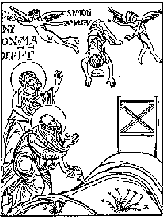




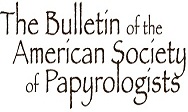
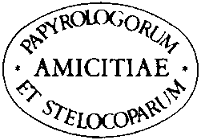
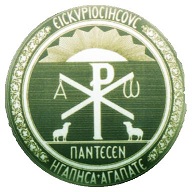





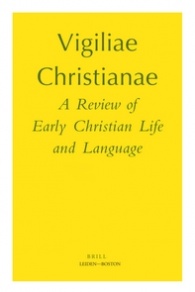






Pingback: Early Jewish, Christian or Manichaean Manuscript to be Auctioned
Great material, Alin – thanks for sharing!
Pingback: Walking Toward Jerusalem - Digital Potpourri 6-2-12
Wow! Truly lovely items! I am hoping to see a followup post on the auction. I’m really curious to see what some of these antique have sold for.
I finally had a closer look at this. Anyone with even a superficial knowledge of Coptic would know that line 11 doesn’t make reference to Mani’s father Patek.. Talk about false advertising!
I am interested in Erik von Scherling, but can’t find where else on your blog you have discussed him. Can you point me in the right direction?
I deleted the other post in which I mentioned von Scherling, but I can send you a more detailed paper about him by e-mail.
Thanks — I would be very interested in reading your paper (I assume your blog software makes my email address available to you). Since reading your recent blog post I have found this: http://www.trismegistos.org/coll/detail.php?tm=179 which cites a 2007 article on von Scherling’s collection, but I have not had a chance to locate a copy yet; my interest is medieval Latin MSS, but I suspect this article may concentrate on papyri.
Indeed, my article focuses on some Coptic fragments sold by von Scherling.
The article to which Trismegistos website refers is M. Bakker, A. Bakkers and K. Worp, “Back to Oegstgeest: The von Scherling Papyrus Collection. Some von Scherling Texts in Minnesota,” Bulletin of the American Society of Papyrologists 44 (2007) 41-73. It is available here: http://quod.lib.umich.edu/cgi/t/text/text-idx?c=basp;idno=0599796.0044.001
Many thanks for that link. If your article discusses the man at all, as well as his MSS, I’d still be interested.
Pingback: Two New Articles on the von Scherling Collection of Coptic Papyri | Alin Suciu
Pingback: A Fragment from Genesis in Sahidic Sold at Christie’s | Alin Suciu